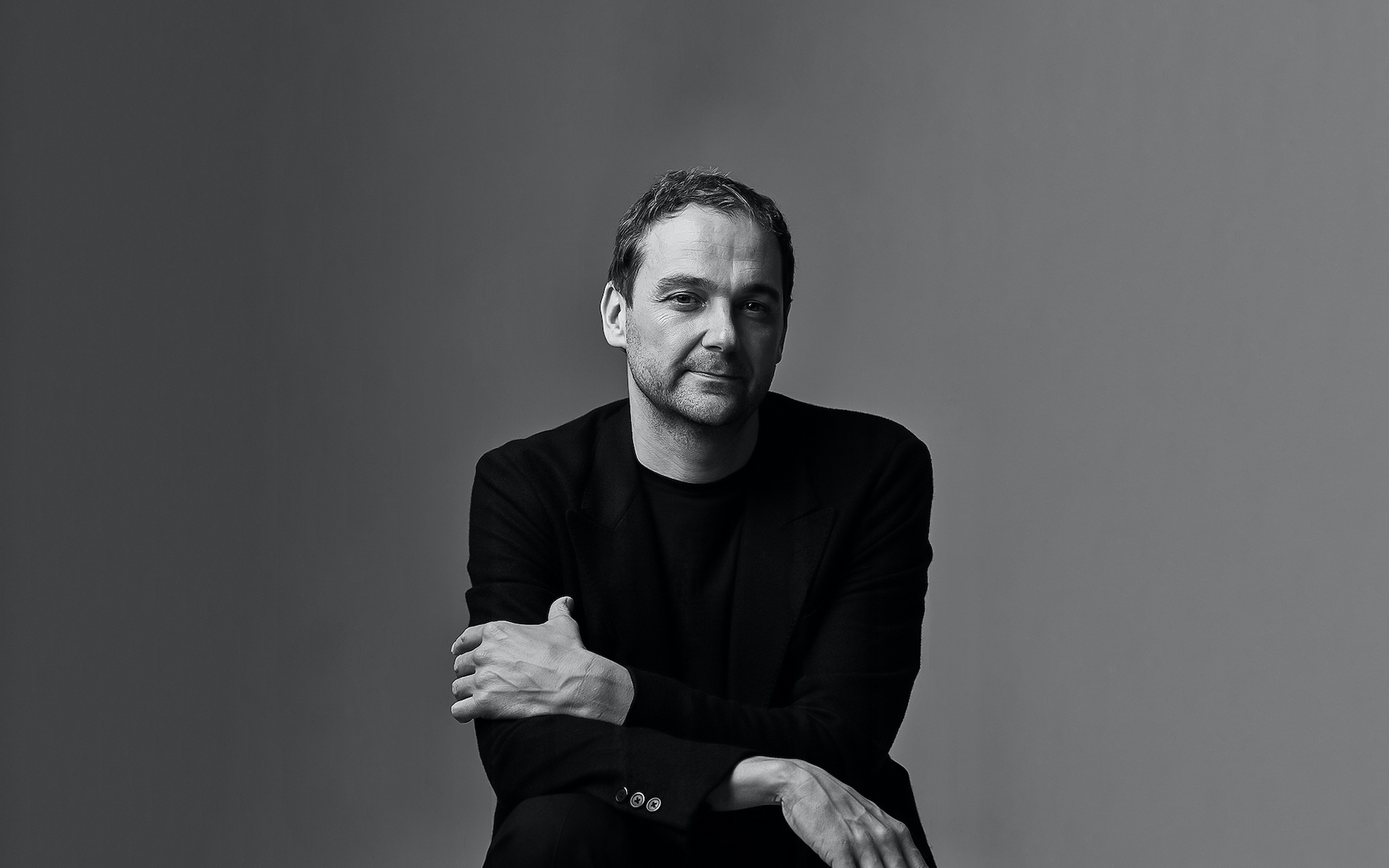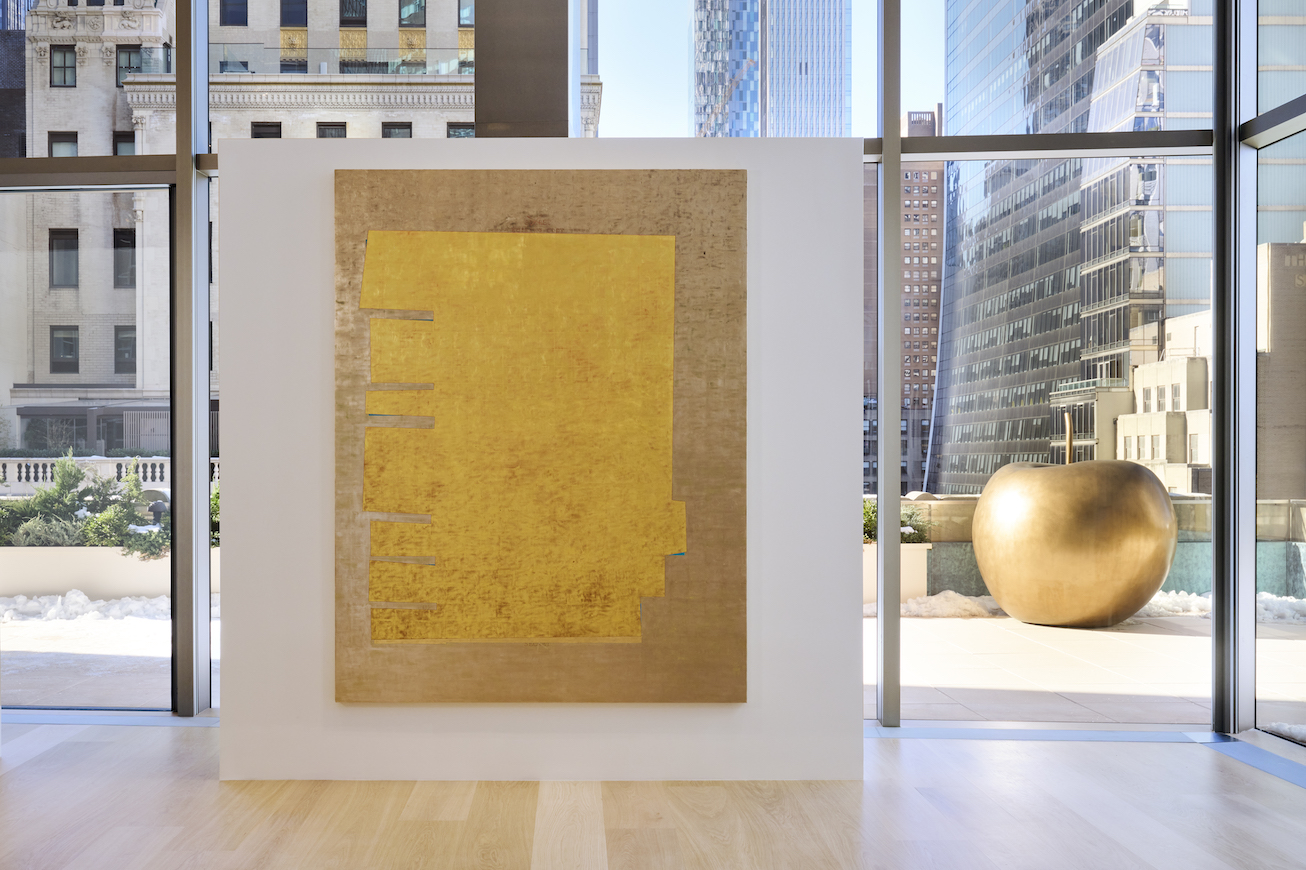Sam Gilliam turns 80 later this year, and with a potent and thick career of experimental, abstract, and Color Field-related work in his wake (though he shows no sign of slowing down), it’s high time there’s been a serious reassessment of his work. The Washington, D.C.-born and based artist is celebrated for his early work in the deconstruction of the canvas, and is recognized for pioneering the idea of painting on a canvas without stretcher bars in the mid-‘60s.
“Sam Gilliam: Hard-Edge Paintings 1963-1966” – on view at David Kordansky Gallery through May 11 – is artist Rashid Johnson’s second foray into curating—he curated Gilliam into a group show in London in 2012—but as far as second curations go, there’s a fair amount of historical value to this endeavor. Even artists and critics very familiar with Gilliam’s oeuvre have not seen many of his Hard-edge paintings, and this wading into unfamiliar territory is the impetus behind Johnson’s choice to give these works the attention they deserve.
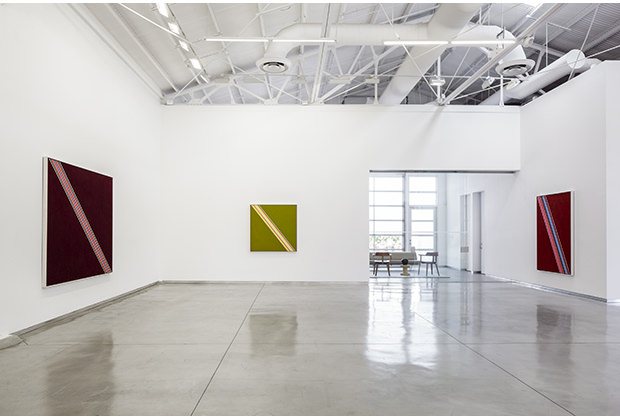
Installation view
Whitewall caught up with Johnson during the installation to learn more about Gilliam and his intentions for the exhibition.
WHITEWALL: I wanted to start, because I’m a little bit unfamiliar with Gilliam’s work—I shouldn’t be—but, I’m getting a bit of an education on him from this show.
RASHID JOHNSON: That’s common to be less familiar with his work.
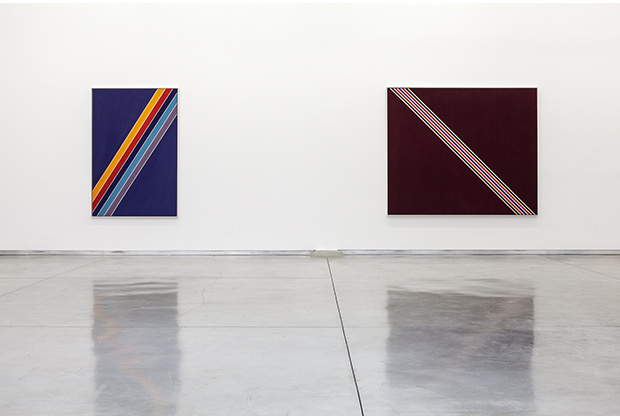
David Kordansky Gallery, Los Angeles, CA
WW: Right. I was wondering if you could describe Hard-edge painting to me in the way Gilliam was employing it.
RJ: As far as considering Hard-edge painting, it’s a fairly traditional understanding of the taped canvas. In Sam’s case, he used a raw canvas where the paint was brushed onto the canvas using tape to create strict and defined lines.
WW: Was he a progenitor of Hard-edge painting?
RJ: A reference point would be Kenneth Noland. There was obviously an interest for Sam in the work of Barnett Newman as well—artists who were really interested in producing a strict line, but not entirely erasing gesture. In these particular paintings from ’63 to ‘66, you see some leaking between the lines, which Sam, I believe, employed very specifically, because there is the option to make it completely hard. In a few of the paintings, you see that hardness.
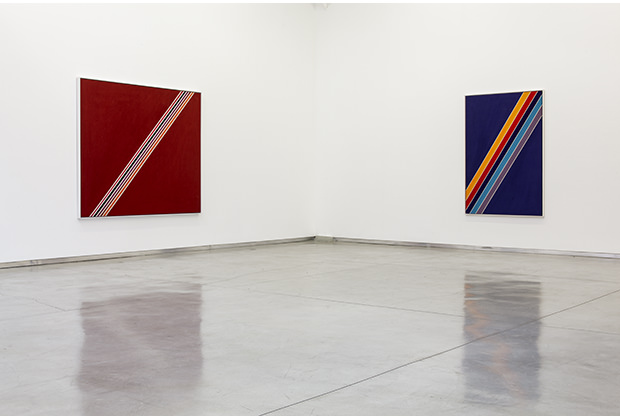
Installation view
WW: Would you call the lines ‘hostile’ in a way?
RJ: I wouldn’t call them hostile. I would call them strict.
WW: What do you feel is the currency and the relevancy of these works from the mid-‘60s, these Hard-edge paintings. Why did you want to show them?
RJ: I was interested in, and continue to be interested in, Sam’s entire body of work. I think the reason that I reached into these particular works is that they’re even less familiar than the work that people are familiar with, if they are at all familiar with his work. The Hard-edge paintings were works that I was less familiar with.
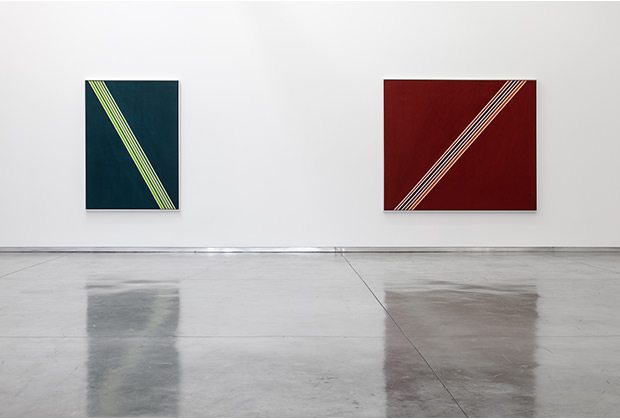
David Kordansky Gallery, Los Angeles, CA
I think they’re relevant in a couple different ways. There are some artists functioning in similar ways today. If you get a chance to go to some young artists’ studios today, you’ll see that there’s an interest in Frank Stella, an interest in Barnett Newman, and a lot of young artists are exploring similar directions as these painters. Also, there’s this idea of the escapist tactic that’s been employed in Sam’s work. If you think about the time in which he’s making these paintings—Kennedy gets assassinated, Martin Luther King, Jr. is assassinated shortly after that period—and you have a guy living in Washington, D.C., right in the heart of a lot of this discourse, choosing to avoid it. It’s, in its own way, a form of protest. As an artist, as a person considering their environment, from my generation, you would look at the war in Afghanistan, the war in Iraq, and how do artists function and build bodies of work that don’t necessarily address those issues specifically, but are somehow happening at the same time as those things are.
WW: Have you talked to him about why he chose to stay away from certain subject matter in his paintings?
RJ: I think he thought that what was happening in real painting was more what he was doing. He was less invested in painting as a cultural discourse or a cultural vehicle, and more interested in participating with the artists that were around him at the time and artists that were functioning in this capacity, and that’s what he thought painting was, and that’s what he wanted to pursue. He wanted to be a painter, not a commentator.
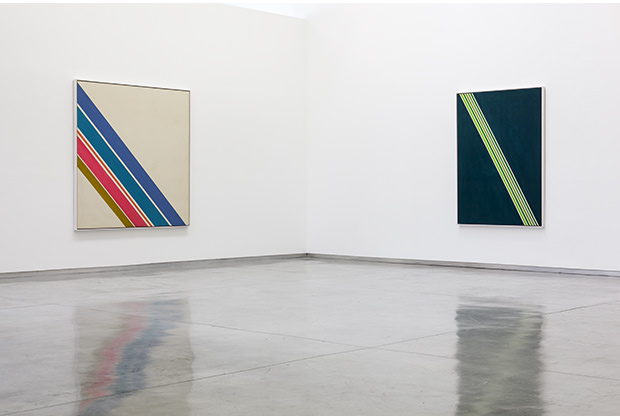
Installation view
WW: You make work that is quite different from Gilliam’s, especially his Hard-edge and more minimal painting. I know you curated him into the “Drip, Drape, Draft” show at South London Gallery. Was that your first interaction with him?
RJ: That was my first interaction with him as a one-on-one conversation. I’d been familiar with his work since I was a young artist. I came across his work when I was about 20, when he and I were both showing at a gallery in Chicago that focused mostly on black abstract painters. And so I became interested in his work at that point, and I started to consider a lot of what he was doing with draping and the removal of the stretcher bars. That work tends to be a lot more gestural, and maybe has more in common with how I work than this body of work does. But my familiarity with his work goes considerably further back than that exhibition.
WW: Gilliam deals a lot with art education. I watched an interview he did with E. Ethelbert Miller, and Gilliam said, ‘I don’t believe that art is all about “now,” it’s a lot about “before.”’ In some ways, this show is educational, as it is a historical show of somewhat forgotten work. Do you feel that this show is something of a history lesson?
RJ: I think it functions as an introduction. I haven’t said the words ‘forgotten artist,’ but maybe he’s an artist that’s less familiar. There are a lot of young painters and historians who are familiar with his work. More, this show functions as an introduction to people who aren’t, so it has some educational quality.
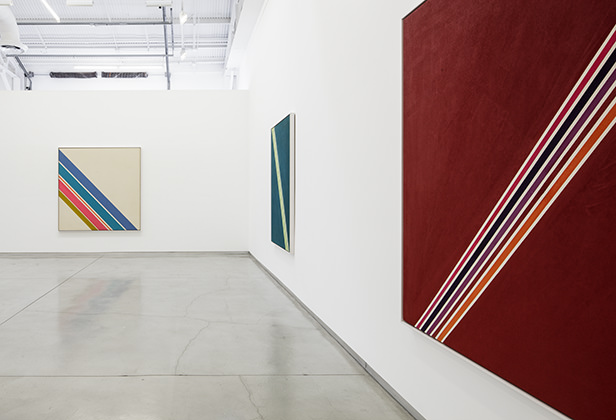
David Kordansky Gallery, Los Angeles, CA
WW: As an artist and a curator, what’s the most important thing you’ve learned from Gilliam as you’ve had these conversations with him about his work?
RJ: We speak quite a bit. He’s been really generous with me. The thing that sticks with me from this experience is that he’s really given me the chance to look at his body of work, and he doesn’t bully me into what he would imagine I should show from his work. He’s, in the most generous way, let me have my way with paintings of his. That artist’s generosity with an artist from another generation, with a different history—giving agency to me, a young artist, to allow his vision to be reinterpreted—that generosity is what I most walked away with from this experience so far.
WW: As you’ve been given the reigns to his work, I wonder about how you approach the curation of an exhibition like this. How do you, as an artist, choose what to exhibit, how to exhibit it, and how to address it curatorially?
RJ: You do it very carefully. The thing that I wanted to do was bite off just a little taste, enough for me to wrap my head around without overwhelming myself by introducing the artist in all of his gore. I just wanted to carefully take a piece that I was less familiar with, and that I thought was amazing, and go from there. From there, the work led me down the path to whatever narrative exists in it. I sometimes try my best to stay out of the way, and not produce a story, but allow a story to be told.
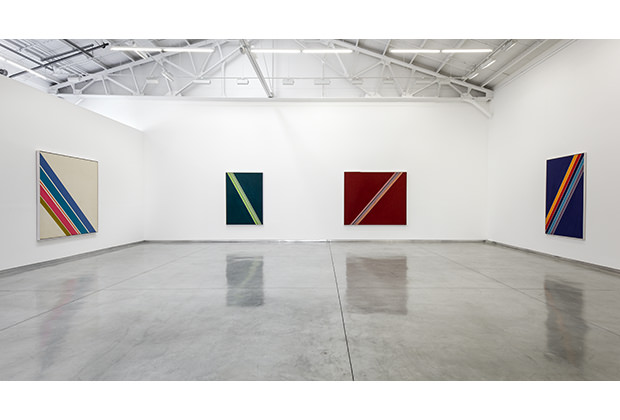
Installation view
WW: Curation is such a time-consuming process. How do you balance the world of being a curator with producing your own work?
RJ: Simply put, I try to focus on my work when I’m in the space where I’m focusing on my work. When I’m focusing on someone else’s, I try to commit an appropriate amount of time to consider and deal with and read about and think about that artist. Whether I’ll go into several other curatorial ventures or not, or whether I’ll have seen how difficult it is, and will focus exclusively back on my own practice, I haven’t decided yet. This has been a really interesting thing for me to explore and to see that side. It’s changed the way that I work with people, going forward, as they try to wrap their heads around my projects.
WW: Like you said, he loosened his grasp on his work for you, and I’m wondering if that will help you let your work go a little bit.
RJ: It’s definitely given me some perspective on what other options or what other ways people go about handling the way that their work is considered, especially when someone else is considering it, through your eyes, but with their own agendas as well.
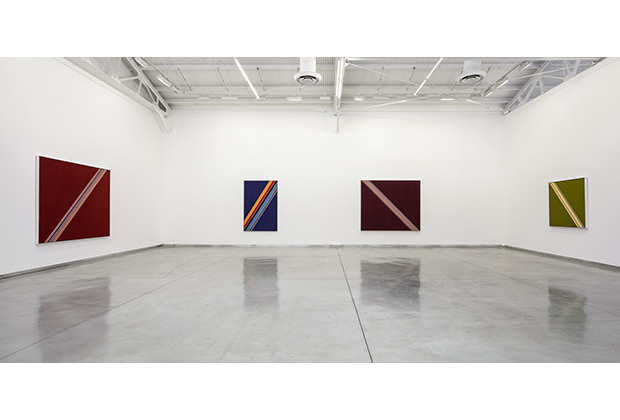
David Kordansky Gallery, Los Angeles, CA
WW: What do you see as the ideal outcome for this show?
RJ: Ideally, the thing that I would most like to see is Sam happy with the way that I’ve installed the work and chose the painting I chose. I just want to know how he feels about that. If there’s an opportunity for people to be introduced to his work, and for them to learn from it as much as I have, that’s my only goal. And I’d love to see him have continued success.





